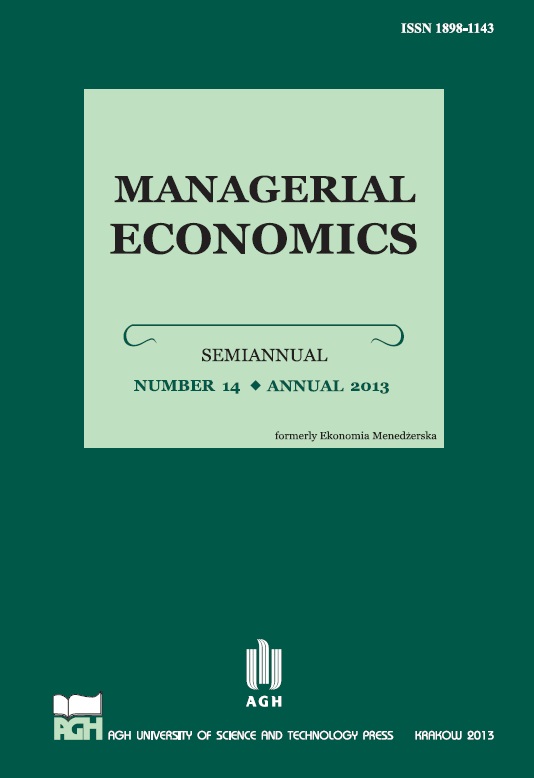The structure of contemporaneous price-volume relationships in financial markets
DOI:
https://doi.org/10.7494/manage.2013.14.39Keywords:
stock returns, volatility, trading volume, long memory, copulasAbstract
The main goal of this paper is an examination of the interdependence stuctures of stock returns, volatility and trading volumes of companies listed on the CAC40 and FTSE100. The authors establish that the mean values of respective measures are different on the markets under study. In general, they are larger for equities from CAC40 than from FTSE100. The Mixture of Distributions Hypothesis with long memory is rejected for about 70 % of stocks from both markets. Additionally fractional cointegration was tested. The lack of fractional cointegration, suggests a rejection of the last variant of MDH in all cases, i.e. the time series under study do not exhibit common long-run dependence. The analyzed time series are not driven by a common information arrival process with long memory. Correlation between volatility and trading volume is present for all the stocks of companies from these markets. The mixtures of rotated copulas and Kendall correlation coefficient allowed the checking of extreme return-volume dependence structures. The empirical results reflect significant dependencies between high volatility and high trading volume. In general, the dependence structures of stock returns and trading volume are different. In the case of CAC40 companies high trading volume is not correlated as frequently with high stock returns as with low stock returns. For companies listed on the FTSE100 high stock returns are mostly related with high trading volume.
Downloads
Downloads
Issue
Section
License
Download, sign, scan and attach copyright statement form.

